James Crouch, aka Theodore Keatinge, False Priest
James Crouch, who would go by half a dozen other names before he died, was probably born in London sometime in the 1830s. His mother died when he was young, around 1845, and his father abandoned him. He may have spent some time with his uncle, but it wasn’t long before he wound up in the Battle Poor Law Union, a workhouse in Battle, Sussex. [1] James was an intelligent boy and a Catholic; combined, these offered him a way out of his poverty. When he was moved to the workhouse at Hastings he became friends with the local priest, and the man was so impressed by him that he persuaded the wealthier members of his parish to sponsor James to go to Rome to study for the priesthood. He stayed there for three years, but was expelled before he completed his studies – some reports say for dishonesty, others for “viciousness”. Both were, it would become clear, a central part of his nature.
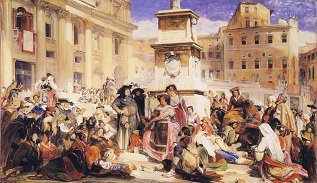
James returned to Hastings, where he told his chief benefactor (a Mr Stillwell) that he had realised he had no vocation, and so had left the college voluntarily. The man was understanding and sympathetic, though he was somewhat less so when James took the money he gave him to pay off his debts and instead left the country. James was now fluent in several different languages, and had a world-class education – more than enough to secure him a comfortable position as a teacher anywhere. But his natural dishonesty came to the fore, and so when he applied for a position in Rome in 1855 as the tutor of an Italian prince’s son he stretched the truth somewhat and claimed to have completed his studies and become a priest. Surprisingly he got away with this, and he might not have been discovered if he hadn’t gone for an even more daring imposture. He managed to get hold of a Cardinal’s outfit, and in this garb he attended a “conversazione”, a gathering similar to the later Parisian salons. This was held by one of the Cardinal Prefects and all the Cardinals of the capital were invited. James managed to blend into the crowd, but was eventually exposed – either through becoming drunk, or through running into someone who recognised him as a mere tutor. He was thrown out of the party, then fired and exiled from Rome for his crimes.
James made his way to Marseilles, where he passed himself off as the nephew of an English archbishop in order to stay in a hotel in style, and then decamped without paying his debts. He made his way to the Middle East, where he turned up in the city of Tyre in Lebanon. He presented himself to the Sheik, with a letter of introduction from Constantinople that gained him an audience. He expressed his admiration of Islam, with the implication that he was interested in converting. He later claimed that the Sheik was as impressed by him as the Catholic grandees of Hastings had been, and allowed him to accompany him on his Hajj to Mecca. If so he would (as a non-Muslim) have been forbidden from entering the city itself. Still, he went on to travel to Jerusalem before he returned to England in 1857.
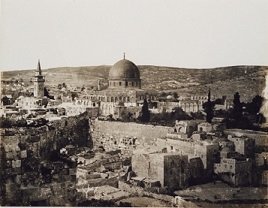
On his return, perhaps in a spirit of rebirth, James renamed himself as the Reverend Arthur Mereton. As a man with no family or friends James Crouch left barely a mark on the world, and some accounts of his life even think that Arthur Mereton was his original name. He put his new knowledge of the Holy Land to good use, arranging to give a series of lectures on the subject. Unfortunately for his customers they paid in advance, and so he never appeared in their lecture halls. He then went on to Shrewsbury where he defrauded a local man of some money, but this time he misjudged his mark. He was arrested and sentenced to three months in prison. (He was tried under the name of “Edward Morton”, which he presumably made up on the spot.) On his release he was re-arrested on a different charge and sent back for another twelve months. He passed the time writing poetry. The book Reminiscences of the Gold Fields And Elsewhere in New South Wales gives the opening verse of one of those poems as:
Star, memory, stay; the aching thoughts of joy for ever past and gone;
My life is now with misery fraught; in my sad cell I weep alone.
He was released in June 1859, and made his way to the village of Helmdon in Northamptonshire. There was a small Baptist church in the town, and Arthur made the acquaintance of the Reverend Doctor Foster, the local Baptist minister. Convincing the man that he had had an epiphany, Arthur converted to Baptism and made several very well-regarded sermons and speeches in the local tabernacle. His popularity, as always, came to an abrupt end. Though this time it was not financial shenanigans that led to his downfall, but rather romantic ones. Several ladies in the congregation were somewhat disconcerted to find that the new minister had proposed marriage to each of them, and taken advantage of that promise. He fled the town to avoid a charge of “breach of promise”, and headed to London. There he used forged letters of invitation to gain money that he used to buy a new suit, and in that suit he went to Bradford in Yorkshire to give a series of lectures on “London Life”. He stayed at a guesthouse ran by a young widow named Mrs Bonner, and like many others she was charmed by the young man. Arthur wooed her, and on the 23rd of June (under the name of “Arthur Henry Montague Meretou”) he was married to her. Married life didn’t seem to agree with him, however. Before long he took the widow’s money and fled first to London and then, on the mail steamer Boanerges, to the gold fields of Australia.
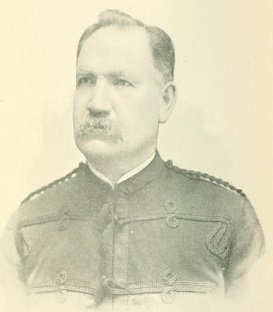
Arthur’s conduct on the mail steamer was reputedly scandalous – he was accused of “violating” two women on board, and only escaped imprisonment by pledging to marry one of them. Of course he ran out on the deal and next surfaced in the gold fields of New South Wales, near the village of Major’s Creek. He was now the Reverend Montague Mereton, and he had two partners he had picked up somewhere. One was a phrenologist named Adolphus Spohr, while the other was a fellow passenger on the Boanerges named John Dunbell and kept a skittle alley for the miners. Montague too practised his trade, and performed marriages for the small town. His mind clearly wasn’t on the job, however, as it later transpired he had made a mistake on one certificate and accidentally married one man to his bride’s (married) mother. That wasn’t what got him into trouble with the law again though – that happened when he and his two partners, along with three prospectors, stole some gold dust from a miner named Charlie Champagne’s claim. The local lawman (Martin Brennan, writer of the aforementioned “Reminiscences of the Gold Fields”) arrested the six men, but they were released for lack of evidence. The gold dust was handed over to Montague (considered the most respectable of the six), and he immediately sold it and skipped town. His comrades were furious, and Dunbell told Brennan about Montague’s behaviour on the Boanerges as proof of his character. Brennan soon established that no priest named Merton was on the legal register of those allowed to carry out marriages, but Montague was beyond his reach. He spent several years in Tasmania, and may (according to some reports) have been imprisoned. In 1865 he returned to England on a ship named “Rifleman”, paying for his passage by tutoring a fellow passenger’s children.
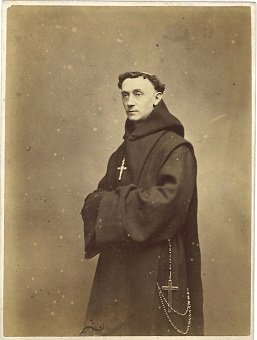
On his return to England, he joined an Anglican monastery in Norwich under the name of Brother Manus. This monastery was somewhat of an oddity, and had been founded by Joseph Leycester Lyne, an Anglican curate who was convinced that monasteries were a necessary part of the religious community. Since one of the major events in the creation of the Anglican faith was the Dissolution of the Monasteries, this idea found little support among his contemporaries. [2] Still he persisted, renaming himself as Father Ignatius and in 1863 founding a religious community in Norwich. This could be labelled a cult, in the more modern sense, and no doubt Brother Manus (the latest alias of James Crouch) planned to seize control of it. Fortunately for Father Ignatius he was more perceptive than most and expelled Manus for “fomenting rebellion”. Father Ignatius himself wound up expelled from Norwich when a hostile local bishop managed to find a flaw in his title to the land housing his community. Father Ignatius moved to Wales and founded a new monastic community named Llanthony Abbey. He split his time between London and the Abbey, and despite scandal (among other things he was accused of doing something almost unthinkable for the time – conducting a wedding ceremony for a gay couple) the Abbey lasted until his death in 1908, and even for a few years after that.
James Crouch travelled around England over the next few years scheming and scamming, popping up in Clapham, Worcester, and Chelsea. He may even have returned to Italy, this time as a Protestant missionary. He was arrested in 1872 for forging letters purportedly written by the Bishop of Bath and Wells, was tried under the name of “Arthur Henry Mereton, aka Keatinge” and was sentenced to several years in prison. In 1879 he was released on probation, and it was around now he picked up a female partner named Polly. [3] Unlike his previous liaisons this one seems to have been honestly dishonest, and the pair became partners in crime as well as in intimacy. Polly was an excellent forger, though not so excellent as to have avoided several convictions for the crime. In 1881, in defiance of his probation, he and Polly went to America. [4]
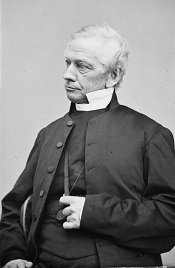
On his arrival in New York, he introduced himself to the Episcopal bishop Horatio Potter [5] under his new favourite alias – “Dr Theodore Keatinge”, an ex-Jesuit who had converted to Protestantism. (Which Protestant faith “Keatinge” had converted to was usually dependant on who he was talking to.) It was a persona calculated to appeal to the Protestant clerical mindset – a member of the most fervent Papist sect who had “seen the light”. [6] Potter gave Keatinge a platform to preach, and his sermons were very popular for a time. Several were published by Henry Ward Beecher in the Christian Union under titles like Ten Years in Rome and The Confessional Unveiled. However this notoriety drew the attention of Michael Corrigan, the Catholic Archbishop of New York. [7] Corrigan called on Father Isaac Hecker (a prominent theologian and missionary) to inspect the articles. Hecker was able to find numerous errors that proved Keatinge had never actually served as a Catholic priest, and his evidence was solid enough that Beecher and Potter admitted their fault and denounced Keatinge as a fake.
No longer popular in New York, Keatinge headed north to Montreal. There he masqueraded as a Catholic priest and applied to join the Jesuit Order, perhaps looking to fix the holes in his knowledge that had led to his problems in New York. However he was exposed and fled south once again to New Jersey, where he preached in the country towns. His relationship with Polly didn’t stop his usual habits, and he seduced a young girl from his congregation. She was underage, and he was caught – he and Polly (and, according to some reports, a child Polly had borne) fled the US back to England. There he resumed his usual frauds, including collecting a reward offered by the Anglican church for ex-Catholic priests who converted. In 1886 he travelled to Dublin, where he played the same scheme he had in New York – preaching sermons as Dr Theodore Keatinge once more. His denouncement in New York he recast as a punishment for his conversion, and he was able to perform a popular (and profitable) series of lectures before the truth caught up with him once more – and more, as it turned out that most of his lectures were lifted wholesale from the work of Henry Liddon, the legendary Anglican orator. This time the scandal was large enough to receive widespread newspaper coverage and poison the well for similar scams in Britain and America both. Keatinge decided to cash in on this scandal, and so in 1888 he sold the London Evening News an account of his life – one an equal mix of fact and fantasy, of course. It was calculated to arouse sympathy, and from the popular sentiment he was able to gain funds by subscription for him and Polly to travel to a place he had been before – Australia.
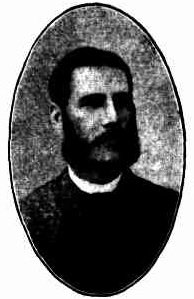
Keatinge arrived in Sydney in 1890, and settled down there. His prior published articles were enough to gain him work with the city’s newspapers, and the controversy that surrounded him simply helped him to fit in with the rough and tumble atmosphere of the city. Sydney was a metropolis like no other, where the elected officials were as likely to be found fist-fighting in the streets as they were debating in the houses of parliament. One such politician was Adolphus Taylor, Member of Parliament for West Sydney and editor of The Truth, a newspaper that was dedicated about 50% to attacking his political opponents and 50% to unsubstantiated scandalmongering. Taylor bought Keatinge’s first novel, which was titled Damned, a story of Antwerp, with a view to serializing it in The Truth. However when he and the owner (William Willis, another politician) read it, they decided not to publish it and refused to pay. In the December of 1890 Keatinge called on Taylor to demand payment, but Taylor wasn’t home. In fact his house was empty, except for a twelve year old serving girl named Mary Ann Brown. When the unfortunate girl told Keatinge this, his vicious nature saw an opportunity. He attacked and raped her.
When Adolphus Taylor came home to find the Reverend Keatinge raping his servant girl, his first instinct was not to call the police. Instead he paid the girl to keep it quiet, and told Keatinge that he wouldn’t report him if Keatinge left Sydney and dropped his lawsuit. Keatinge pretended to agree, but made no move to leave. After two months he decided that the delay had been long enough that Taylor would face too great a scandal in exposing him to risk it, and visited him in Parliament to tell him that he would be pressing a lawsuit against him for payment. On hearing this Taylor immediately denounced him as a rapist, and had the guards arrest him. The trial was a major scandal – it ended Taylor’s career (though the degeneration of his health due his rampant syphilis was also doing that), and nearly torpedoed Willis as well. The other newspapers didn’t miss a chance to put the boot in – one report makes sure to mention:
Taylor, while under cross examination, admitted that he was frequently drunk for a week at a time, and possibly might have gone for more than that period without washing himself.
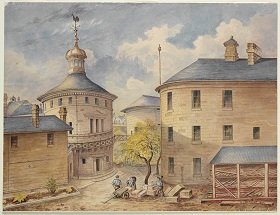
Even the jury were angry with the pair – when they returned the verdict against Keatinge (of guilty, naturally) they added a rider formally recording their opinion that the two men had messed up. Still, the main focus of public ire was Keatinge. He was sentenced to five years imprisonment, though as it happened he served only three days of his sentence. On the 27th February 1891 he was found dead in his cell. The official verdict was that he had suffered a stroke from stress, but most believed he had either killed himself, or been inadvertently killed by a guard who saw no reason to be gentle with a man who had raped a twelve year old girl. However he died, it was a squalid end to a squalid life. His obituary in the Sydney Daily Telegraph was a mixture of fact and speculation hiding as fact. Despite somewhat more rigorous research and the clearness of years, the same could be said of this article. James Crouch, also known as Arthur Mereton, also known as Theodore Keatinge, false priest, false ex-priest, pretend Jesuit and professional liar died as he lived – cloaked in his own lies.
Images via wikimedia except where stated. Banner is a detail from “Sermon and Deeds of the Antichrist” by Luca Signorelli. No known photos of Crouch, Mereton or Keatinge seem to exist. (If you know of any, please let us know in the comments!)
[1] The actual site of the Battle of Hastings.
[2] Oddly, Anglican convents had been around since the 1840s with virtually no complaint. Anglican nuns even accompanied Florence Nightingale to the Crimea as nurses.
[3] Her surname may have been “Law”, as he referred to her as a direct descendant of William Law (author of A Serious Call to a Devout Life).
[4] Some sources give the date of this trip as 1870, but given the people he allegedly met on the trip 1881 is a far more likely date. Either that, or he made two trips.
[5] Famous for granting his authority to an Anglican order of nuns in New York in 1865, oddly enough.
[6] He may have been inspired by Charles Chiniquy, a former Catholic priest who was excommunicated for practising while suspended from duties, and who retaliated by becoming a Presbyterian pastor, joining the Orange Order, and accusing the Vatican of having orchestrated the American Civil War and the assassination of Abraham Lincoln.
[7] Though New York had a Cardinal at the time, so he didn’t take over as the leader of Catholicism in the city until 1885.
